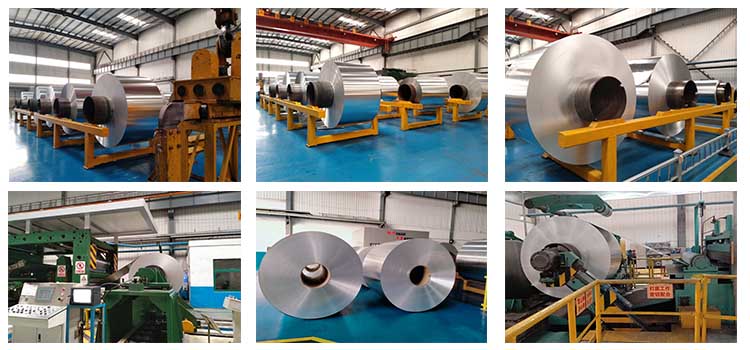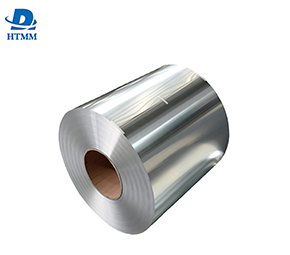.jpg) Aluminum Foil 12 Micron Thickness
Aluminum Foil 12 Micron Thickness
The thickness of the aluminum foil is between 0.012 and 0.26, and the supply parameters can be based on customer requirements and technical agreements. And provide customers with aluminum foil raw materials for aluminum foil slitting machine, coating machine equipment transformation and equipment manufacturing business.
Household aluminum foil refers to aluminum foil used to make and store food at home. With the advantages of convenience and sanitation, it is also widely used in hotels and restaurants.
Common specifications of household aluminum foil are as follows: ①Thickness: 0.012-0.03mm ②Width: 300-500mm ③Length: 8-50m/roll ④Wound on a paper core with certain strength ⑤The alloy is mainly pure industrial aluminum, in annealed state . The main quality requirements are as follows: ① The surface of the aluminum foil should be clean and flat, and no cracks, wrinkles, bruises, corrosion, marks, etc. are allowed on the surface ② There is no residual oil on the surface ③ The cores, packaging materials, and adhesives used must be harmless and odorless ④ Aluminum foil Tensile strength is greater than 5MPa, elongation is greater than 2%

At present, the main production method of aluminum foil products is the rolling method. Rolling is one of the commonly used and common processing methods in metal pressure processing. The rolling process is a process in which the rolled material is drawn between the rotating rolls by the rolls when the rolls interact with the rolled material, and undergoes plastic deformation under compression. Aluminum foil blanks are divided into hot-rolled blanks (DC materials) and cast-rolled blanks (CC materials). Recently, a new type of blank production process, that is, continuous casting and rolling production process (Hazlet production process) has gradually matured and has become another production method of aluminum foil blanks. At present, in China, DC and CC are mainly used as blanks for aluminum foil products. Technical requirements for aluminum foil blanks: melt quality, surface quality, end face quality, leather thickness and width deviation, plate quality, and mechanical properties. The principle of formulating aluminum foil rolling process: ①Determination of the total processing rate The total processing rate refers to the total deformation degree of the foil after the recrystallization and annealing to the rolled product. Generally speaking, the total processing rate of series 1 can reach more than 99%, and some 8 series products can also reach this value, but the total processing rate of aluminum alloy foil is generally below 90%. ②Determination of pass processing rate The determination of pass processing rate is the core of the rolling process. For pure aluminum products, the pass processing rate can reach 65%. After the billet is annealed, it is not appropriate to use an excessive processing rate. , Generally take about 50%. 10. Aluminum foil rolling process parameters: rolling speed, tension, rolling force, oil temperature 11. Roll is an important part of aluminum foil rolling mill. The aluminum foil quadruple irreversible rolling mill has four rolls, two work rolls and two backup rolls. The hardness of the work rolls is 100-102HSD, and the hardness of the backup rolls is 75-78HSD.
Aluminum Alloy Foil Stock 8011 Grade Used for food packaging aluminum foil, medical aluminum foil, its performance is better than pure aluminum foil, also used as bottle cap material





